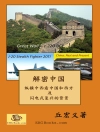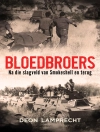Lancaster, the county town of Lancashire, stands at the lowest bridging point of the River Lune. A chartered borough since 1193 and a city since 1937, it has had a long and turbulent history. Since the Roman army first saw the strategic possibilities of a low hill by the river it has housed garrisons and acted as a fortress. Its position on the main west-coast road to and from Scotland has on numerous occasions led to the passage of hostile armies.
As county town and seat of the Assizes it has seen all the principal criminal cases for Lancashire tried in its magnificent Castle over the last eight centuries. Next to the Castle in a typical juxtaposition of Church and State stands the Priory church with its own history running back some twelve or thirteen centuries.
In this book, based wherever possible on original sources, such as the rich resources of the borough records or the local newspapers, the author takes a thematic approach. In ten chapters he examines themes such as ‘House and Home’, ‘Working for a Living’ and ‘Where do you come from?’, the last of which is a study of all the people who over the centuries have come from other countries to live in Lancaster.
عن المؤلف
ANDREW WHITE was Head of Lancaster City Museums for the past 18 years, following a dozen years in the museum services of Middlesborough and Lincoln. He has an MA in Classics from Lancaster University and a Ph D in Archaeology from Nottingham University. He is a Fellow of the Museums Association and of the Society of Antiquaries of London. Married, with three grown-up children, he lives in the Lune valley. In his spare time he writes, lectures and broadcasts on local history. He is the author of several books on Roman archaeology and on Georgian and Victorian architecture, as well as works on more general local history and many articles in journals. Previous books published under the Phillimore imprint include Lancaster: A Pictorial History and A History of Whitby.












